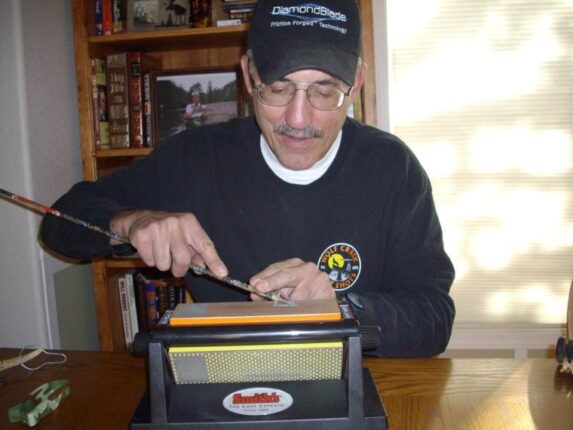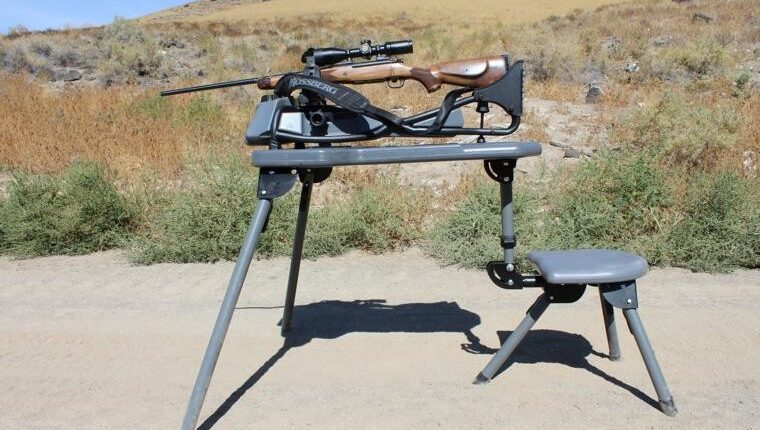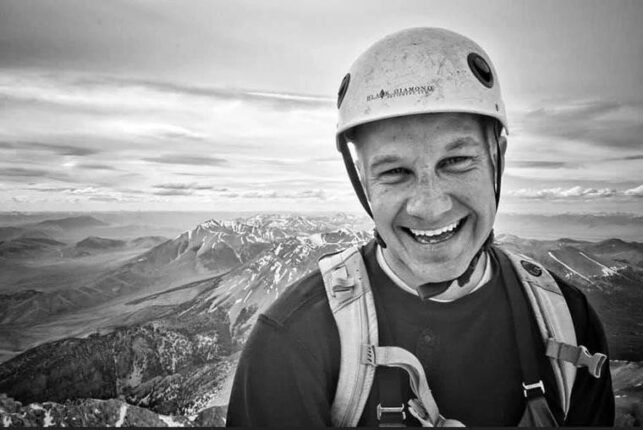As hunting season is getting into full swing, I hope that you’re prepared. You’re practiced up with your bow, your rifle is sighted in, and if you’re out of shape then you’ve been working out. But one minor detail that most people overlook, which in a very short amount of time will become a big deal, is if your knife is sharp or not. In all actuality, it’s not that most hunters overlook this task; they just flat out don’t know how to sharpen a knife.
I always say that 100 percent of the outdoorsmen use a knife and yet I bet less than 5 percent can sharpen one. That’s why I’ve conducted knife-sharpening seminars from Texas on up to Alaska, at the SHOT in Vegas, SCI Convention in Reno, DSC Convention & Expo in Dallas and everywhere else in between.
While it does take some skill to sharpen a knife, it doesn’t take a Ph.D. It’s somewhat scientific and somewhat touchy feely (artistic). Here’s what I mean by that. You engineers want step 1, 2 and 3. You’re the kind that designed the pre-set systems. And they work but I say learn to do it the old way by hand and then you’ll have a sense of pride at learning your new skill. You’ll even be able to impress your guides.
To master this skill, you do have to learn the basics and adhere to them to be successful, but your artistic flavor is also necessary because it does vary somewhat knife to knife.
In the old days, the metal in knives was softer so our dads/grandads only used a smooth Arkansas whetstone. Now, the knives are so hard that you’d work forever with one so I recommend using a diamond stone which is a metal plate with impregnated diamond chips. There are cheaper ones on the market but Smith’s Consumer Products makes the best. Their surface has a consistent texture.
Smith’s color codes their stones according to the coarseness of the surface. Yellow (325 grit) is coarse and orange is fine (750 grit). I advise using the orange. I only use the coarse stone in my knife-sharpening seminars when someone comes in with a really dull, chipped or mushroomed edge knife. Don’t let your knife get that bad. Keep it touched up.
If your edge gets too chipped up you may have to regrind the edge or, you can just keep using it and over time you will grind past the chip. But while cutting you will snag on the chip. It’s not that your knife is dull, what you’re cutting is just snagging and stopping. Make sense?
What is the best angle? Just use whatever angle came from the factory. Used to be, edges were around 30 degrees. Then you started seeing 25-, 22-, 20-, then 18-, some 16- and now even 14-degree angles. In the old days, they couldn’t be that steep. The metal was too soft so the edge would have rolled or chipped.
So if you see a knife with a steep angle then you know that the metal is hard. No biggie, use a diamond stone otherwise it’d take all day to sharpen in on an Arkansas stone.
It doesn’t matter if you cut into the stone or push away. The big deal is to do the same number of strokes on each side and keep the same angle all the way down the blade. When it starts getting sharp the strokes will feel smoother. Like the edge is sliding on glass. That tells you it’s sharp.
Before you start, look at the edge. If the light reflects off the edge, that’s a flat (or dull) spot. Really bad edges may be mushroomed or rolled. If so, don’t cut into the stone, push away. Also, if it’s really bad, I lay the knife down flatter the first three or four revolutions and then go back to the correct angle after the metal is lined back up.
Finish up on an Arkansas stone. I had a buddy in college that then progressed to a leather strop and resin and he could get a wicked edge.
The ultimate set-up is the Smith’s 8-inch Tri-hone stone. It’s elevated and has a coarse diamond stone, a fine diamond stone and an Arkansas stone. Everyone has a budget so if you can only afford one stone, I’d recommend the Smith’s 6-inch fine diamond. It’s elevated about 1 inch which aids in being able to comfortably access the stone.
There are a lot of ways to sharpen a knife but I think the way I teach is the easiest method. My brother uses a little 4-inch flat piece of diamond impregnated metal and he can get a knife just as sharp as I can. So if what you’re doing is working, don’t change.
As we come to a close don’t give up if it takes you a minute to master this skill. While it is a simple concept it will take a month or so to get the hang of.
To help speed up your learning process here are a couple of helps. I have a short e-article on Amazon Kindle and a YouTube on Ron Spomer Outdoors.
Tom Claycomb lives in Idaho and has outdoors columns in newspapers in Alaska, Idaho, Utah, Nevada, Colorado and Louisiana. He also writes for various outdoors magazines and teaches outdoors seminars at stores like Cabela’s, Sportsman’s Warehouse and Bass Pro Shop.







